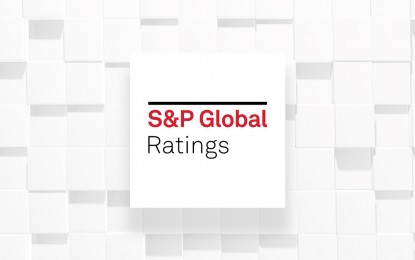
MANILA – Philippine banks’ loan provisioning in 2020 is benefiting the sector this year, although a spike in non-performing loans (NPLs) is expected in the first quarter after moratorium on loan payments.
In a report, S&P Global Ratings forecasts NPLs to expand by six percent this year from 3.6 percent last year and asset quality is seen to deteriorate after the 60-day payment moratorium mandated by Bayanihan to Recover as One Act for loans with due dates between Sept. 15 to Dec. 31, 2020 ends in a few days.
“S&P Global Ratings does not expect the industry to reach pre-pandemic financial performance until 2023,” it said, citing its projection that “only a mild recovery in profitability” may happen this year.
The report said 2020 loan provisioning among Philippine banks “was adequate” at around 70 percent as of end-December last year and this is expected to get support from the recently signed Financial Institutions Strategic Transfer (FIST) Act.
Republic Act 11523, which is an improved version of the Special Purpose Vehicle (SPV) Act of 2002, allows financial institutions to tap asset management companies (ASMs) to manage, operate, collect and dispose of impaired loans.
“This could also, in principle, benefit banks by ensuring that management resources are not spent on recoveries from stressed loans,” it said.
The report further said moratoriums, imposed by the government’s stimulus programs, and loan restructuring helped borrowers with liquidity shortfall and address defaults last year.
“Moreover, banks have actively restructured loans to help small businesses and consumers,” it said, citing restructured loans reached 1.9 percent of the total by end-2020 from about 0.4 percent in the previous year.
It forecasts the rise in NPLs to be driven by consumer and micro, small, and medium enterprises (MSMEs), adding job losses will affect consumers’ ability to pay loans while small enterprises that have been affected by the pandemic might have to close shop.
“While corporate credit quality has been sturdy thus far, slippage is likely in the most disrupted sectors, namely, lodging and food services, retail, transportation, and entertainment and recreation. Overall, banks' exposure to these sectors appears manageable,” it added.
Meanwhile, the report said the negative outlook on its rated Philippine banks “reflects our view that financial buffers could not absorb the rapid deterioration in asset quality likely to ensure if the (economic) recovery is derailed”.
“The emergence of yet more contagious Covid-19 variants with the potential to evade vaccine-derived immunity present a major risk to normalization,” it said.
The debt rater forecasts domestic growth, as measured by gross domestic product (GDP), to recover and rise to around 9.6 percent this year from a -9.5 percent print last year, but added “the output gap won’t likely close over the next three years”.
“Amid early signs of revival, vaccination will be key for a sustaining trend,” it added. (PNA)
